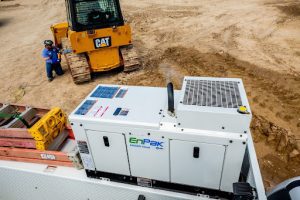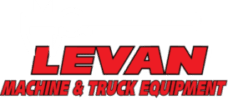
Whether for street cleaners, snowplows, or truck-mounted cranes, many different types of trucks today use hydraulic systems. They offer great performance and can get jobs done reliably and well that would never be possible without hydraulic tools. However, if they run into issues, particularly when they aren’t properly maintained, they can be the source of a lot of problems for you and your business.
There are several common issues that can cause a hydraulic system to underperform or otherwise malfunction, including particulate contamination, water contamination, high fluid temperatures, and leaks. If you’re noticing noise, elevated temperatures, or slow or erratic operation in your hydraulic system, you probably have one of these problems. Here’s what you can do to fix or prevent these issues, or to identify them so you know when to seek hydraulic services from Levan!
Particulate Contamination
When your hydraulic system is functioning right, the hydraulic fluids circulate properly and the filters remove anything in the fluid that isn’t supposed to be there. Particulate contamination is frequently caused by a filter that needs changing or contaminated fluid being added to the system. To prevent this issue, follow your filter change intervals diligently, use a filter with the correct ratings for the application, and ensure that you’re using clean fluid when adding any to the system. You should also make sure you’re following proper service procedures and component installation to keep the assembly contaminant free. If you’re having a problem with particulates already, changing your filter to a fresh and correct one should help.
Water Contamination
If your hydraulic fluid has a milky appearance, it’s most likely been contaminated by water. This can lead to reduced hydraulic fluid lubricity, which in turn causes pitting against metal surfaces, degraded additives and accelerated oil aging.
Like with filters, you always need to be sure to follow proper maintenance intervals for fluid changes. If any water gets into your system, you’ll need to do a complete drain of the fluid, clean the hydraulic reservoir, and install clean fluid to remove the water and remedy the issue. Operating the system regularly will increase the fluid temperature, helping to remove water from oil. To prevent the problem altogether, avoid leaving the system open or exposed and ensure proper vent cap installation.
High Fluid Temperature
High fluid temperature is caused by anything that reduces the system’s ability to dissipate heat, or anything that increases its heat load, such as an excessive workload, a high duty cycle, or a failed or worn component that’s causing internal leaks.
The reservoir and heat exchanger are how a hydraulic system dissipates heat, so keep an eye on the reservoir fluid level and look out for airflow obstructions around the reservoir. If the core of the heat exchanger is blocked, this can also cause issues. All cooling circuit components and heat-generating components need to be checked regularly to see if they need replacing. A fluid temperature alarm can help alert you to problems with high heat.
Abnormal internal leaks can also increase the heat load on the system, like a cylinder leaking high-pressure fluid past its piston seal, or an undersized or overused pressure relief valve. In this case, using a hand-held infrared thermometer or thermal camera can help you identify leaking internal parts, because failed or worn components will show higher temperatures when the system is in operation.
Leaks
Loss of flow in a hydraulic circuit causes a loss of speed, and is often caused by an external or internal leak. External leaks like burst hoses tend to be easy to find, but internal leaks, like leaks in the pump, valves or actuators, can be trickier to find.
If you’re dealing with slow operation when a load is applied, start by verifying the adjustable settings. For systems with variable displacement pumps, pump-mounted pressure compensators frequently reduce flow at a set pressure, so verify that set pressure. Pressure relief valves can also cause reduced flow. If they are too close to system operating pressures, they can cause internal leaking and slow operation. Systems with both variable displacement pressure compensating pumps and pressure relief valves need to have their pressure relief valves set a few hundred psi higher than the pump pressure compensator, to prevent excessive operation of the relief valve.
High fluid temperature and slow operation are problems that are often seen together. Higher fluid temperature means lower viscosity, which causes more internal leakage, and the problem exacerbates itself. Make sure that you maintain the proper fluid level along with the right filters, and fix any leaks as you find them. It’s also important to use high-quality fluid.
With this information, it should be easier for you to identify issues in your hydraulic system and identify the solution! If you need a little help from the experts, don’t hesitate to contact Levan Machine and Truck Equipment! We’ll have you back on the job in no time.
